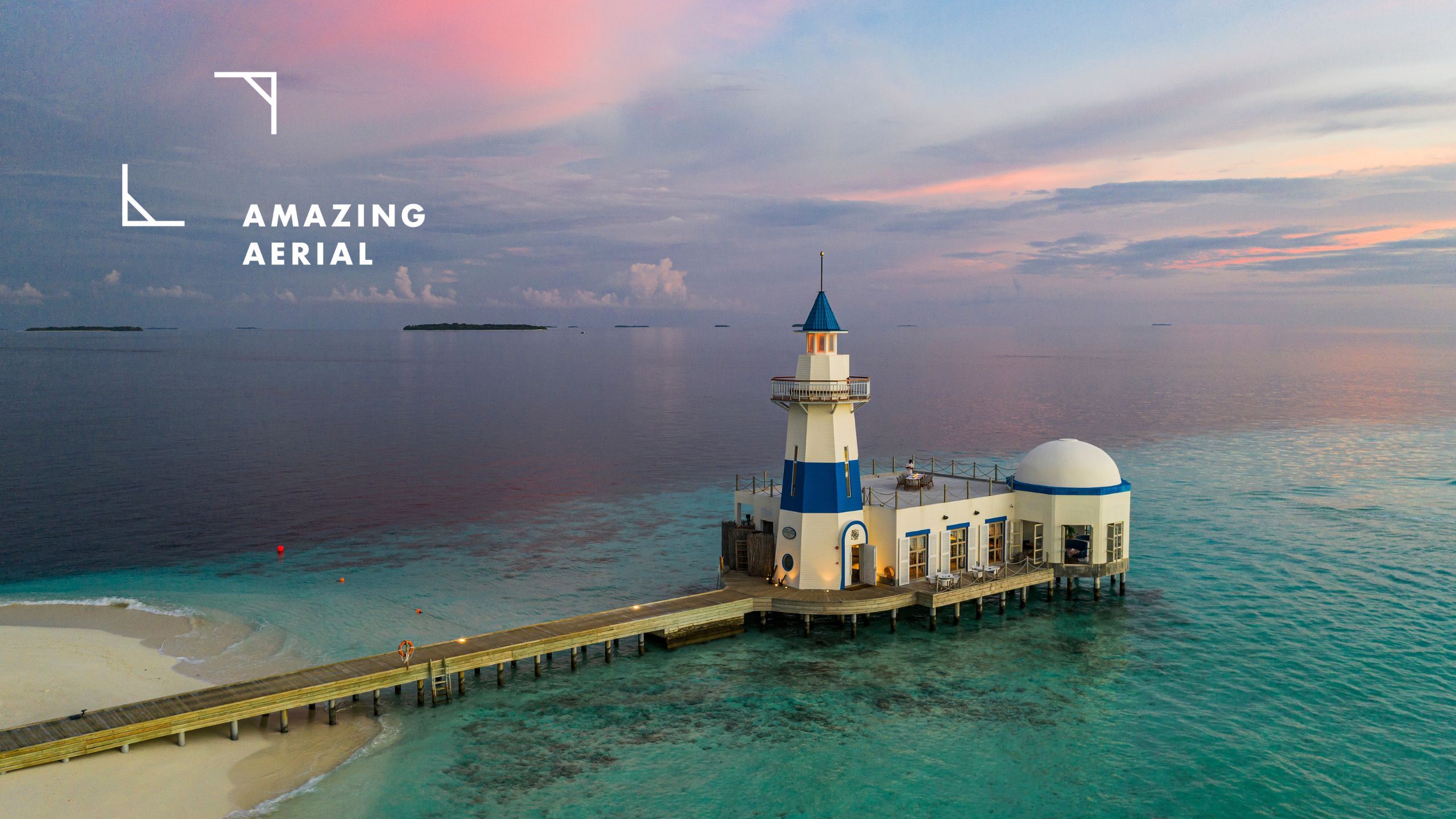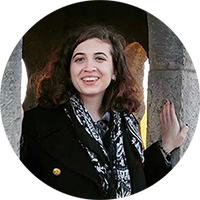More Than Drones: The Many Tools of Aerial Photography
Most aerial photographers nowadays use drones to take their images, but there are plenty of other methods, from paramotors to airplanes. We spoke to some of our photographers who go beyond drones to take their photos.
Mar 17, 2023

An elegant lighthouse graces the island of a luxury resort, Laccadive Sea, the Maldives. The AirPano team has traveled around the world taking aerial photographs using all sorts of tools, from drones to zeppelins. © Amazing Aerial Agency / AirPano LLC
 By Rebecca Duras
By Rebecca Duras
Thanks to advancements in technology, photographers, even amateurs, can create beautiful aerial images without ever leaving the ground. All you need is a drone that fits in a backpack and enough coordination not to steer it into a tree.
Drones make aerial photography easier, yet some Amazing Aerial team members choose different methods to take aerial photographs, often physically taking to the air. Here are some of the less conventional methods for shooting aerial photos.
A Brief History of Aerial Photography
Right now, we label other methods of aerial photography besides drones as “unconventional,” but that was not always the case. It’s sometimes hard to remember since they are omnipresent now, but drones are a very recent development in the world of photographic technology. The first consumer camera drone, the DJI Phantom 1 Drone, was released in 2013.
Aerial photography predates the invention of the consumer camera drone by decades. Airpano, a company that specializes in filming aerial 360-degree content and an Amazing Aerial team member, was founded in 2006! Sergey Semenov, AirPano’s CEO, recalls the early days of the company, when his team just started publishing free virtual tours on their website to share the places they traveled to. “At the time we were filming with digital cameras from helicopters and any flying object we could get, including hot air balloons, zeppelins, and many others.”
As soon as the first drones became available, the AirPano team jumped at the opportunity to use them—but drones looked very different back then. The first drones for photography were bulky gasoline-powered drones with a space to mount a digital camera instead of a built-in lens. Flying these drones requires at least three people: the pilot, a trained technician, and a photographer. “That was really like a rocket launch,” Sergey laughs as he remembers the old drones, “you had to find a really good spot where you cannot harm anyone.” The drones themselves weighed 6-8 kilos and could cause serious damage in an uncontrolled fall!
The bulkiness of the gas-powered drones also made them much less portable. “We had a special car which could bring the drone and a big plastic surface like a launch pad,” Sergey explains, since those drones could only take off from a perfectly flat surface. The whole set-up was impossible to travel with.
It’s no wonder that Sergey and the AirPano team started using custom-made battery-powered drones as soon as they became available, and that the rest of the aerial photography community soon followed suit. Nowadays, drones are portable, easy to fly anywhere where legally permissible, and accessible to everyone in terms of cost and flying. Sergey admits to feeling a little jealous that people starting out now have such an easy time of it. “Ten years ago, flying with a drone was a privilege and you were part of a really small group. Now, every school boy and school girl can ask their parents to buy them a drone,” he laughs. However, democratizing the technology has only made things easier for professionals and made the beautiful world of aerial photography more accessible to everyone.
The Holdouts
Even though drones dominate the field of aerial photography, some photographers still use old school methods such as flying in fixed-wing aircraft. One of those is Amazing Aerial team member Brett Price from Australia, who flies with fixed-wing aircrafts such as a Cessna 185. He works with a pilot who flies the plane, while Brett shoots through the parachute door or port, which provides more visibility than the smaller airplane window. Brett also has a drone pilot’s license, but does most of his work using fixed-wing aircraft.
Brett admits that there are a few challenges with working from a plane. Besides trying not to get the wing of the plane in the shot, “the other main problem is navigating the air spaces…getting permission to enter them.” Flying a fixed-wing aircraft requires more logistical planning and coordination—not only does the photographer have to communicate with the pilot, but they also have to get the approval of the control tower and local authorities.
The Benefits of the Old-School Methods
For Brett and a few others, the benefits outweigh the occasional logistical headaches, which are sometimes present when flying a drone anyway. Some concerns are practical. “If I’m doing work for a client, I can do multiple spaces in one voyage as opposed to a drone where you have to drive from place to place,” he explains.
Sergey agrees and explains that his AirPano team still uses more old-school methods, usually helicopters, to capture panoramas on excursions. Helicopters are more practical in cities where it is difficult to get a drone permit for safety reasons, such as New York, and where it is unsafe to fly a drone through dense buildings. Flying on a helicopter allows the team to quickly capture multiple locations for their panoramas. “For example, if you want to film in New York during sunset it’s much more comfortable to do it with the helicopter since you can capture the Chrysler Building then in a few minutes be near Wall Street, all with the same light,” he explains, while with a drone the photographer would have to physically move from place to place.
Photographers don’t have only practical reasons for sticking to non-drone photography methods. Brett admits that he’s “probably a bit old-school.” He had trouble visualizing the shot just by looking through the drone screen and preferred to see it by himself. “When you’re up in the air and looking down, you can find things to photograph. With the drone you can’t just cruise around and notice things,” he says.
The sentiment is echoed by Bastian Brüsecke, Amazing Aerial’s new team member who flies with a paramotor to take photos. In a recent interview for the magazine, Bastian explained that he decided to start flying with a paramotor instead of sticking to just drone photography because he wanted to see the beauty of the desert from above with his own eyes.
Some photographers continue to use drones and old-school methods such as photographing from planes. Matt Borowick is an experienced drone pilot, but when photographing remote locations such as the Icelandic highlands, he often flies with a plane, as he shared in his podcast interview and masterclass with Amazing Aerial.
Amazing Aerial team member Igor Zirojević has a drone, but captures most of his aerial images of Istria, Croatia from a plane, which allows him to cover more ground in a shorter period. He shared his tips for maximizing flight time in his masterclass and podcast.
Whatever method aerial photographers use, from drones to airplanes to even paramotors, they have one thing in common. All of them are on a quest to find the best way to capture the planet’s beauty from above.
Stay updated when we post new articles.
We hate SPAM. We will never sell your information, for any reason.










